In this webinar, Nimble CEO Jon Ferrara is joined by the queen of marketing metrics Laura Patterson. Laura talks about how to refine your marketing strategy by using the concepts from her book, Fast-Track Your Business: A Customer-Centric Approach to Accelerate Market Growth.
Laura is a recognized and trusted authority for enabling companies to apply data-to-insights, customer-centricity, and Marketing Performance Management method. She is the President of VisionEdge Marketing and has published four books.
MarTechExec selected Laura as one of the top 50 women in marketing technology. She’s also honored to be among the Top 20 Women in Business according to the Sales Lead Management Association.
The growth mandate has become the main focus for many organizations. Since 1997, PwC has been surveying CEOs to learn what they foresee in the coming years. They found a strong correlation between the chief executive’s expectations for their organization growth and global GDP growth.
From PwC’s recent study, they asked, “which of the following activities, if any, are you planning in the next 12 months in order to drive revenue growth?” 71% of the respondents said that organic growth was at the top of their list.
Where does growth come from?
There are several primary sources of growth:
- Launching new products or services
- Finding new business models
- Cultivating deeper customer relationships
- Pursuing innovation as a long-term strategy
- Expanding geographically
- Creating deeper ecosystems
To grow organically, companies need to know how to innovate and launch their products and services. Laura found research by John Cummings that provides insight into why organic growth should be your priority.
Cummings’ study found that organic growth produces better financial outcomes. Organizations that excel at efficient organic growth see total shareholder returns of between 20 to 28 percent and revenue growth of 13 percent compared to organizations obtaining growth from M&A.
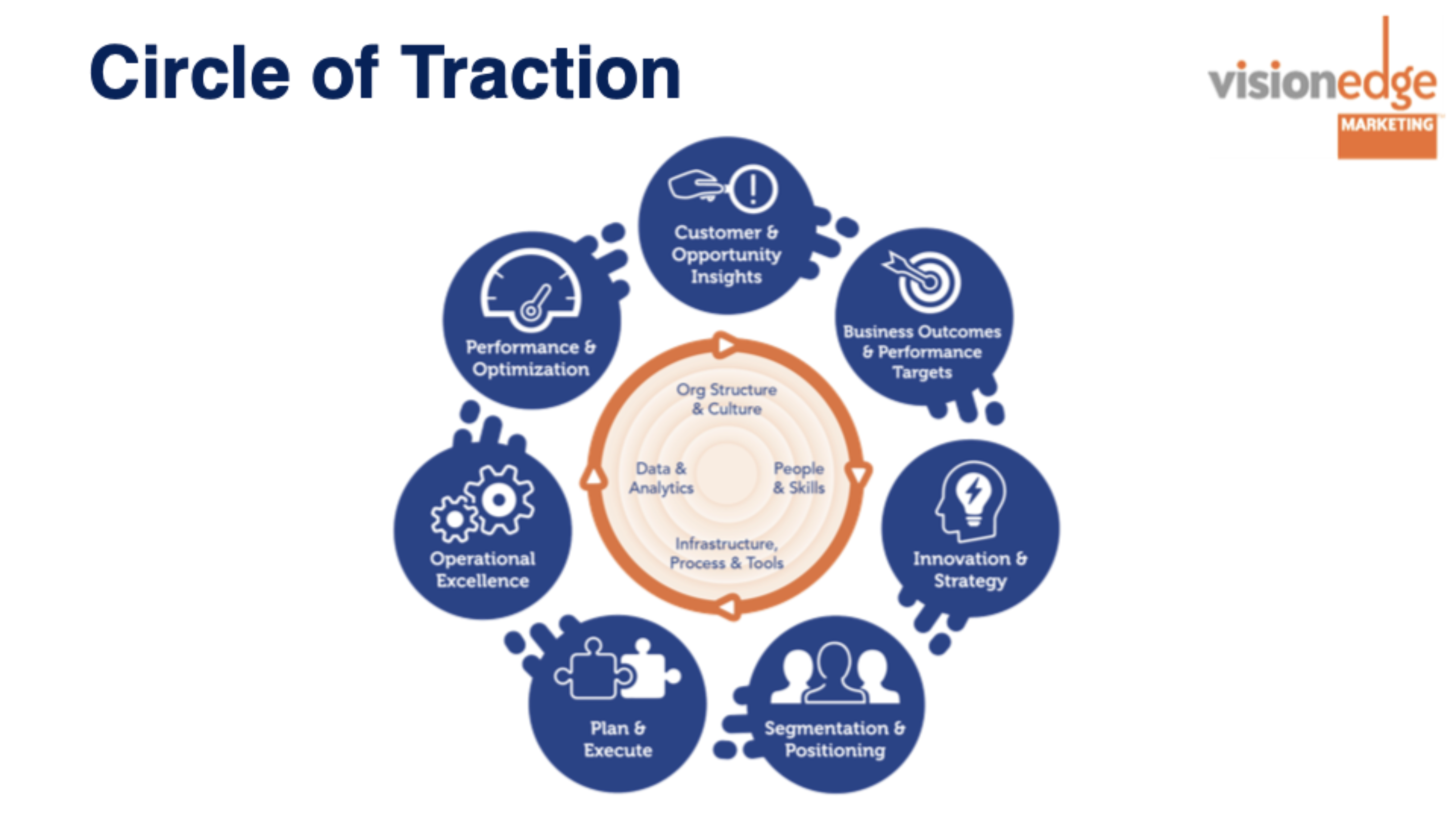
It’s essential to have a framework. For the last 20 years, Laura and her team have created a framework known as the “Circle of Traction.” Her customers have found it a successful way to grow, move, and accelerate their marketing efforts.
The CEO needs to lead the charge of growth. However, when it comes to the pursuit of organic growth, the CEO relies on the CMO as a strategic partner.
“CMOs need to drive real growth if they are to thrive in their jobs. From my vantage point, it has become the single biggest factor that CEOs want from them.”
– Greg Welch, Practice Leader of Spencer Stuart
Laura wants to increase your growth while filling up your pipeline. However, be sure not to confuse growth and pipeline as the same. When you’re talking about leads, you’re talking about your pipeline. Though, there is no point in filling your pipeline if your customers coming in are going out the back door. Plus, if your category’s competitors are growing faster than you, then your growth will decline.
Laura asks the question, where do you start? This question can be answered by the Father of Modern Management, Peter Drucker. He said, “there is only one purpose of a business: to create a customer”.
Laura says a quote from Phil Kotler, “it is the responsibility of marketing to find, keep, and grow the value of customers”. Success in organic growth requires the organization, especially the marketing leadership and organization, to be customer-centric. This is the first pivotal capability out of four from Laura’s new book, Fast-Track Your Business: A Customer-Centric Approach to Accelerate Market Growth.
A customer-centric approach is the ability to create and keep a customer.
Don Peppers helps clarify the difference between product-centric and customer-centric organizations. Product-centric organizations start with having a product or a service that responds to customer needs than getting as many customers as possible who have those needs.
Being customer-centric begins with the individual customer. The aim is to meet the demand of that customer everywhere as much as possible. Customer-centric companies realize that growth depends on how they’re going to make a difference in the market and create value for customers.
Ask yourself these two questions:
- What is OF value to our customers?
- What is YOUR value to your customers?
You need to understand your answers from these two questions to be successful at the customer-centric approach. When you’re talking about your customer’s problem, you want to be compelling, relevant, urgent, and essential to visually understand all the nuances of customer-centricity.
The product-centric process flows through the order of creating, making, and selling a product by starting with a design and goes all the way through the marketing communications, tactical marketing, and notion of sales. However, a customer-centric organization would reverse that approach. They will start with the two value answers from the questions discussed above and figure out a plan to deliver it.
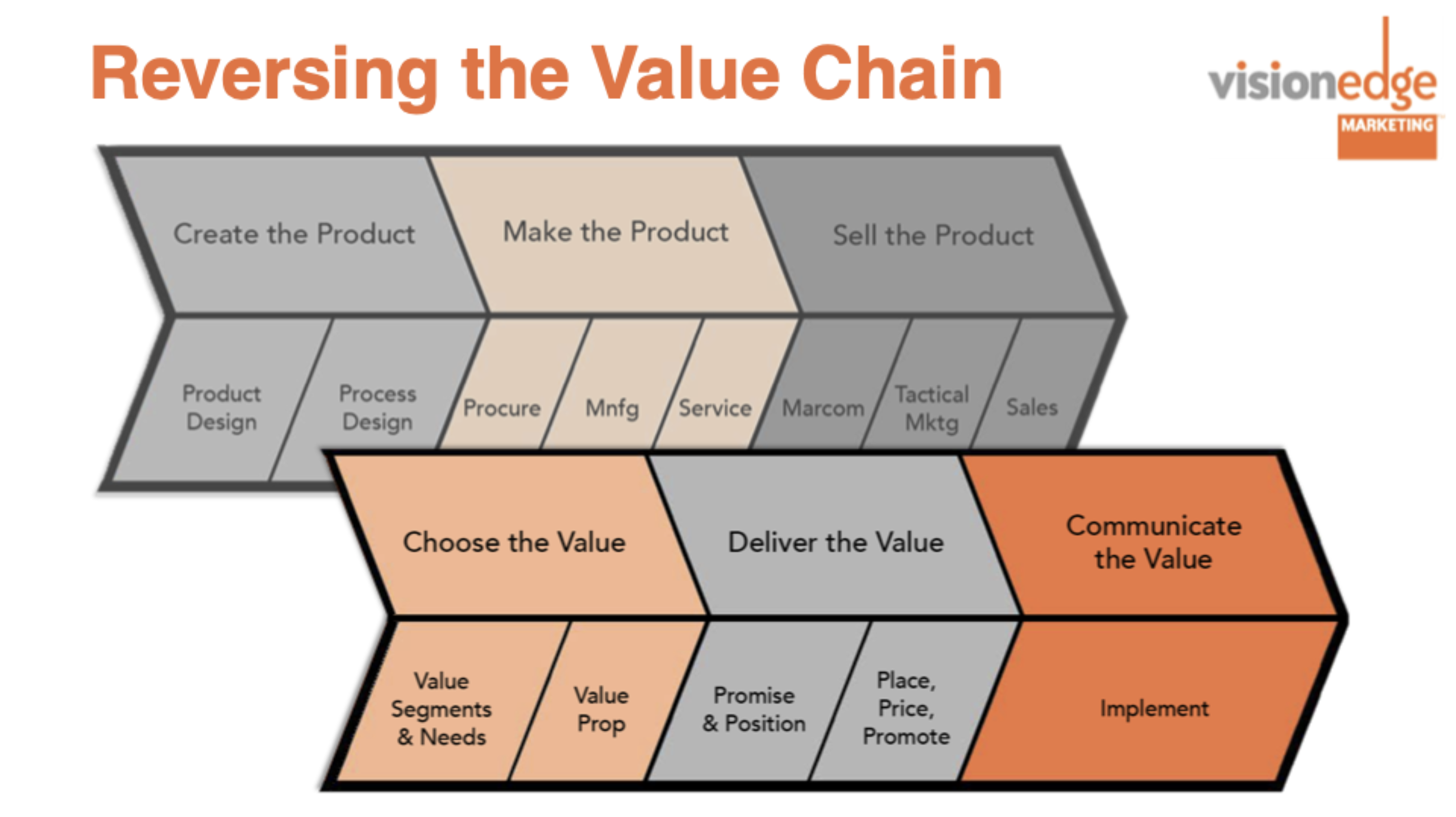
Being customer-centric is a choice that impacts how you run your company. When you’re customer-centric, every decision you make starts with the answer to five questions:
- What are the customer’s needs, pains, and passions?
- How are they solving these today?
- How can we help them solve or realize these going forward?
- How can we do it better than the alternatives that they have available to them?
- How will we communicate this value back into the market?
These five questions can be answered with marketing, which is why marketing plays such a crucial role in organic growth.
When talking about leads and programs, you’re in the downstream. People have become very good at downstream marketing. However, to be successful in the downstream, you need an excellent upstream.
Upstream is the strategic process of identifying and fulfilling customer needs. Any work you’re doing around defining a strategy, your value proposition and positioning, directing the innovation for the long-term sustainable growth, developing segments, analyzing how customers use a product or service – all fall into the upstream.
If you don’t get the upstream right, then the downstream will be in trouble.
If you’re answering questions like these examples below, you are in the upstream process:
- What problems can we solve and what solutions should we bring to the market?
- What segments and what customers in these segments should we target?
- How do we position our products and services for these segments and customers?
- How do we gain access to these customers?
- How do we accelerate product adoption?
- Which of our customers are loyal? Which ones are at risk?
- How do we improve retention? How do we grow our share with existing customers?
- Which customers are pre-dispositioned to purchase?
- How do we reduce the time to buy?
- How do we improve the win rate?
These are examples of questions downstream:
- What is the customer buying process?
- What will bring customers to us?
- Where is the best way to connect and engage with customers?
- What touchpoints are most effective?
- Which personas are the best to pursue?
- How will we score opportunities?
- How do we increase the conversion rate across the stages of the customer buying process?
High performing marketing organizations use both the upstream and downstream processes. All of the answers to these questions have massive implications for your content and promotion decisions.
To answer these questions, you need to have deep customer insight and competitive intelligence and understand the principles of segmentation, positioning, and differentiation. Take away all of the things you’ve learned and distilled them into a strategy and a growth plan.
Laura strongly believes that every marketing organization should have a set of upstream and downstream models.
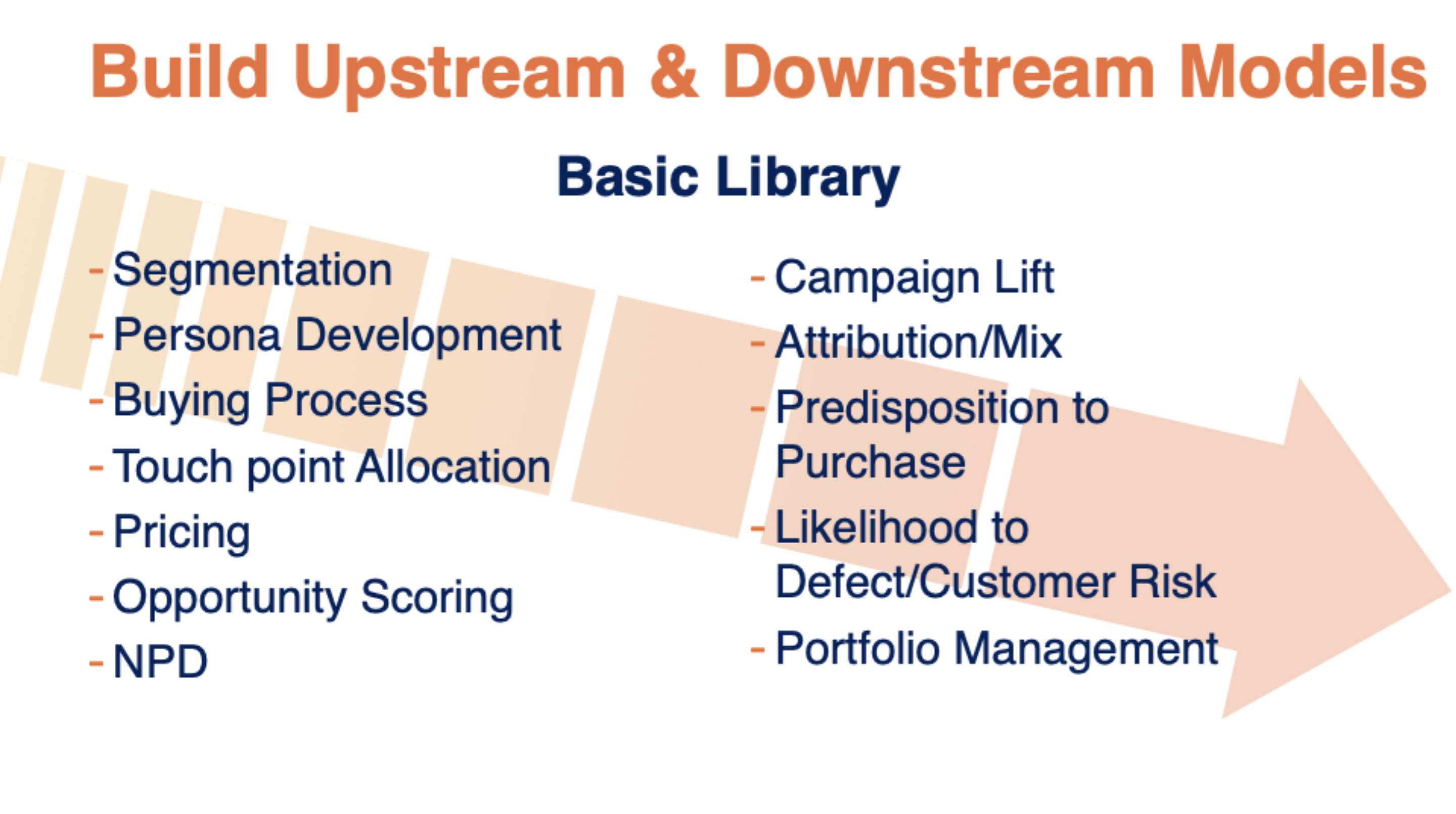
Excellent marketers don’t start with the data; they start with the question.
The challenge is not data for most organizations, but it’s synthesizing it into something meaningful and actionable. An InformationWeek study found that 80% of analytics are never used. Yet, companies who are analytical competitors are more likely to succeed in the market. They use analytics to help answer all of the upstream and downstream questions.
Find the Right Pattern
The real value of data is turning it into something useful and actionable by catching important patterns. Not every pattern is relevant. You need to be able to discern which patterns are germane. Once you synthesize the data and figure out which patterns are relevant, ask yourself, what’s the insight from this?
Don’t rush. Laura suggests that for every pattern you find, write out a sentence that captures insight from the pattern and what you think it means for your business. You might end up having multiple insights from a single pattern. Once you have several statements, put them on a board and come back a few days later to see which ones resonate and are compelling enough to affect the decision that you want to make.
Data derived decisions take time and money, but there’s tremendous value in data and applying analytics to your data. The value of analytics is that you could enable your company to identify new growth opportunities.
Where are you on your analytics maturity? If you’re not where you want to be, put thought into how you might move from today to the next spot on Gartner’s analytics maturity model below.
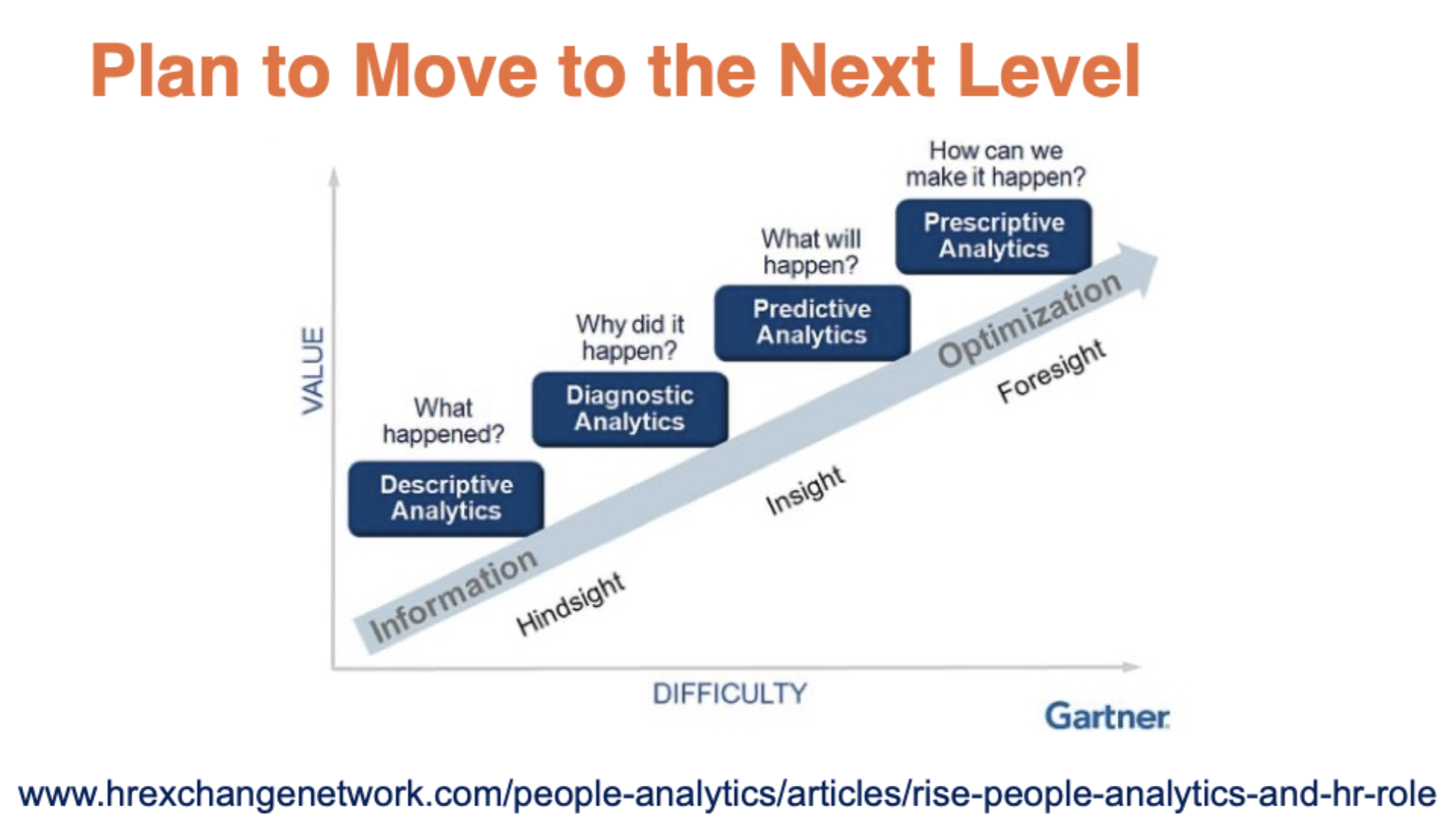
A strategy is a choice. It’s about choosing what you’re going to do and what you’re not going to do. How can we decide which customer-centric strategies we should leverage and which ones we shouldn’t? There are only four ways we can grow and all of them require marketing.
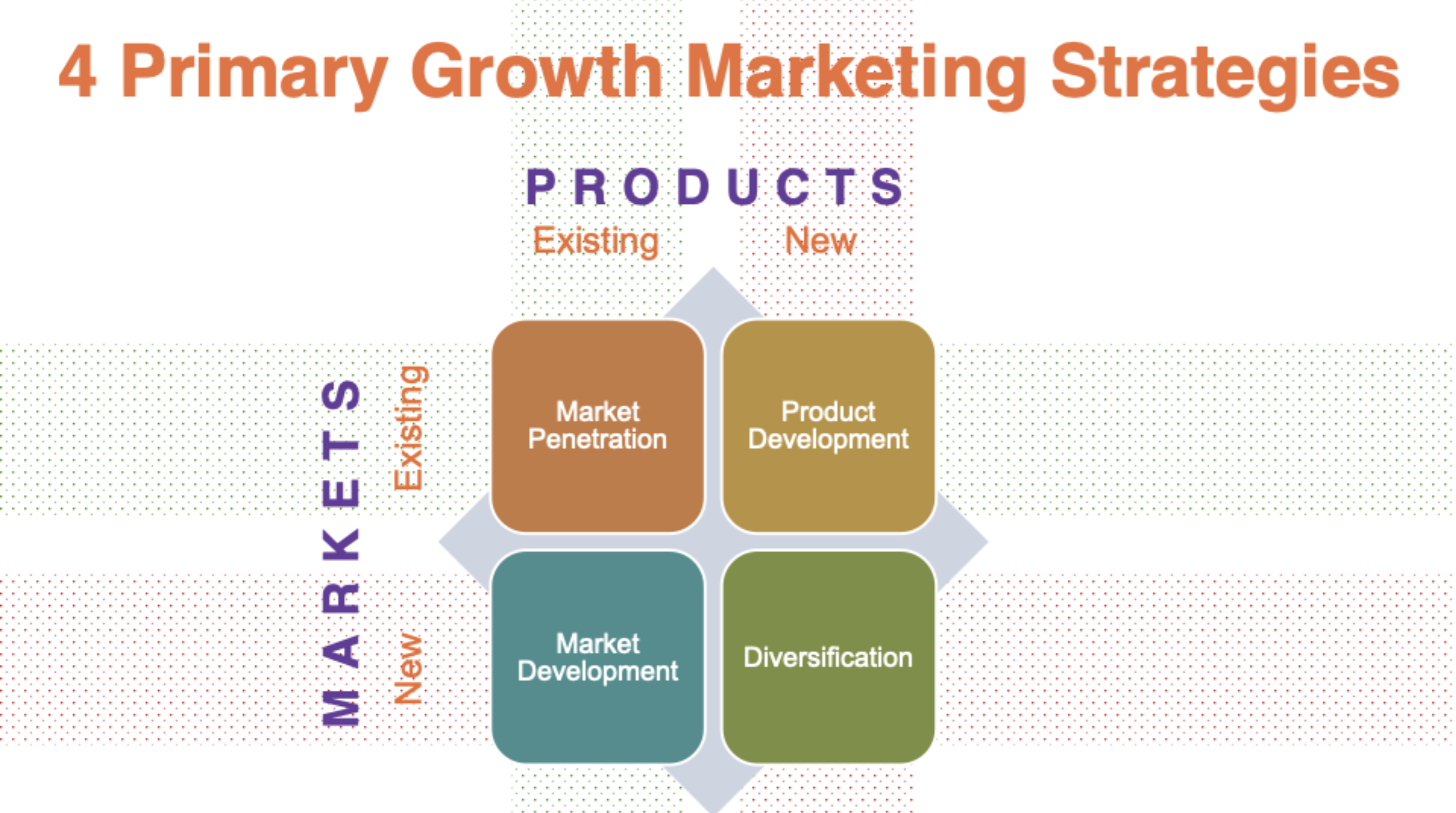
- Market penetration: serve existing markets and customers with existing products
- Product development: serve existing markets and customers with new products
- Market development: serve new markets and customers with existing products
- Diversification: serve new markets and customers with new products
Once you finished with the data and analytics in pivotal capability three, you’ll be able to recognize the behaviors that signal where a customer is in their buying process and when they are preparing to move on to the next stage. Most customers go through the same process. Even when buying a chocolate bar, it just happens at a much more rapid rate.
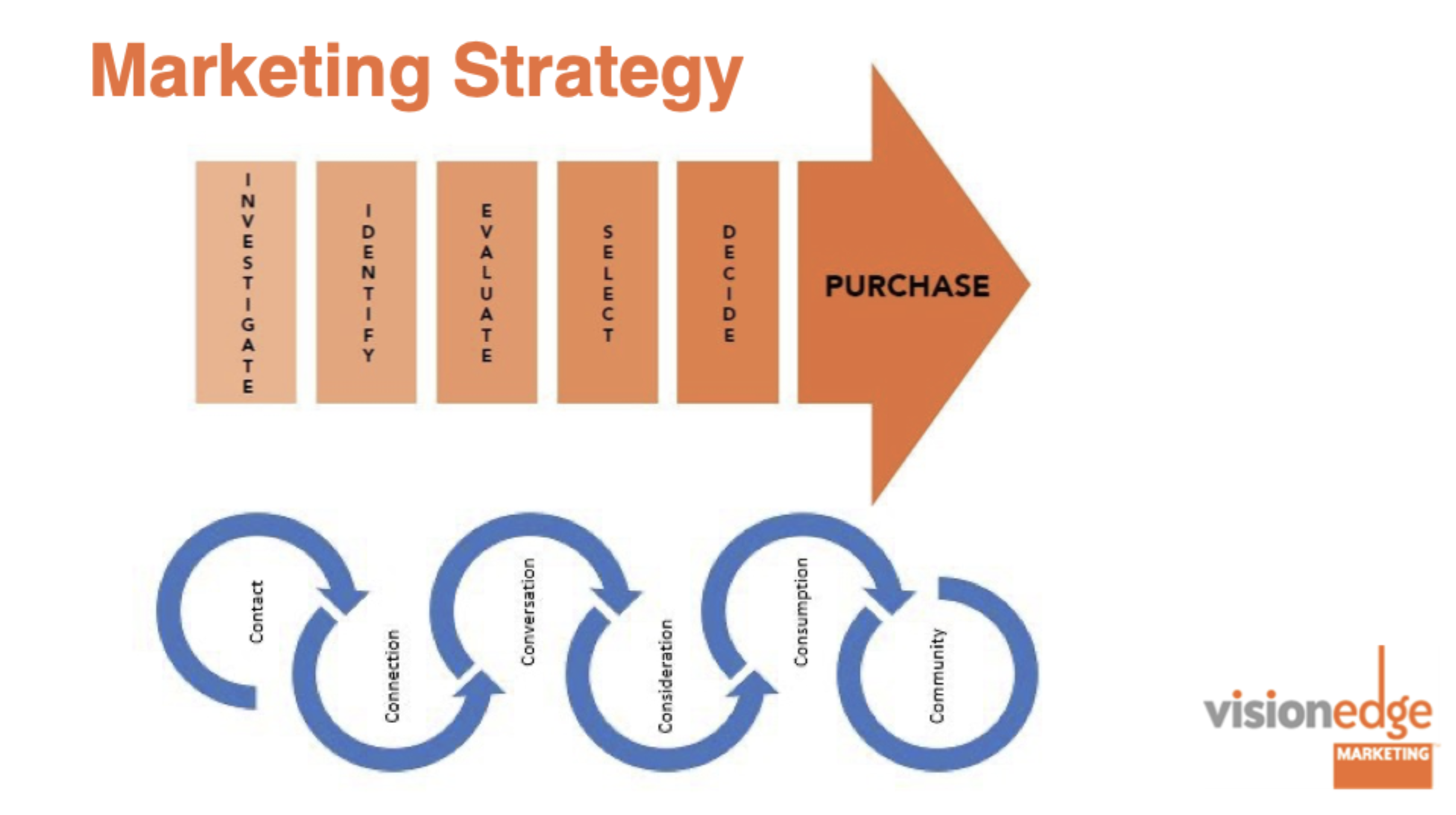
Here’s what you need to do at each marketing stage:
- When you’re in the investigation stage, you need to be discoverable.
- For example, organic and paid search, social media, PR, influencer, anything that can help your business become distinguishable.
- Once you’re in the identify stage, that’s where you need to be engaging.
- For example, blogs, published articles, ebooks, and educational webinars.
- The evaluation stage is about giving advice.
- For example, white papers, guides, sales presentations, trials, and assessments.
- In the selection phase, it’s all about proving.
- For example, case studies, customer referrals, fact sheets, ROI calculators, and certifications.
- In the decision phase, it’s about contracting.
- For example, comparison charts, live demos, and proof of concept make it easy to do business with you.
It’s not over once you acquire a customer. Ultimately, you want to keep and grow the value of these customers and convert them into advocates. To alter them, you need to be able to deliver on the value you’ve promised.
As organizations become customer-centric, never market to buckets of revenue. Marketers market to customers and customer values. Create a plan and process that maximizes customer opportunities. Successful plans have clear customer-centric quantifiable targets – especially marketing plans. If you plan to increase awareness, increase demand, that’s probably not going to help you set marketing up for success. The faster you can move customers, the faster they will transition from the investigation and education phases into conversion and consideration.
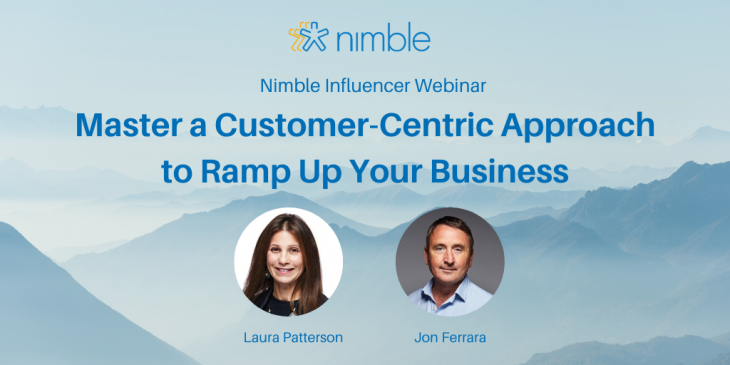
 “CMOs need to drive real growth if they are to thrive in their jobs. From my vantage point, it has become the single biggest factor that CEOs want from them.”
“CMOs need to drive real growth if they are to thrive in their jobs. From my vantage point, it has become the single biggest factor that CEOs want from them.”
